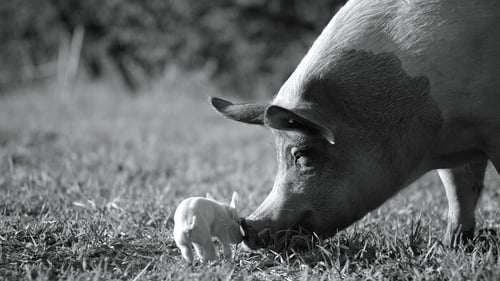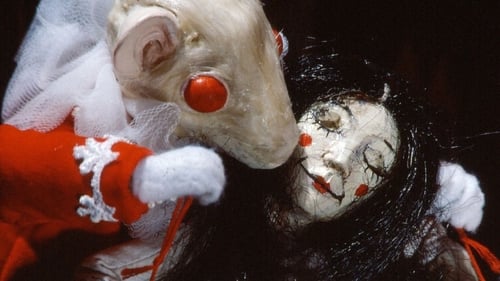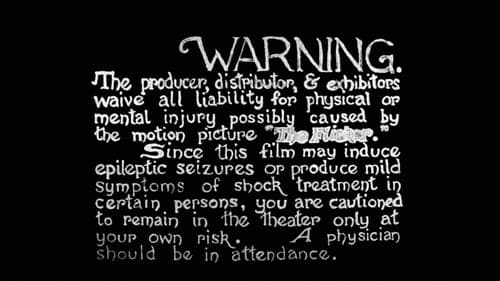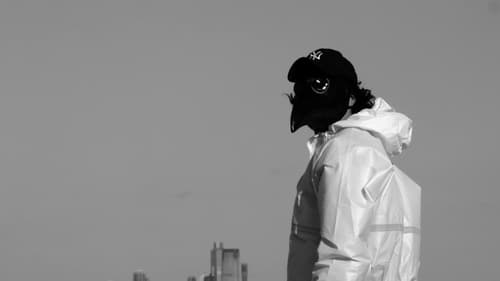The Flicker (1966)
Remain in the theater only at your own risk.
ジャンル :
上映時間 : 30分
演出 : Tony Conrad
シノプシス
A film consisting of alternating black and white frames.

Experiential cinema in its purest form, GUNDA chronicles the unfiltered lives of a mother pig, a flock of chickens, and a herd of cows with masterful intimacy. Using stark, transcendent black and white cinematography and the farm's ambient soundtrack, Master director Victor Kossakowsky invites the audience to slow down and experience life as his subjects do, taking in their world with a magical patience and an other worldly perspective. GUNDA asks us to meditate on the mystery of animal consciousness, and reckon with the role humanity plays in it. Executive produced by Joaquin Phoenix.

The aristocratic White Mice and the rustic Creatures Who Dwell Under the Oak battle over the doll of their heart's desire.

A film consisting of alternating black and white frames.

Light begins to illuminate the small, nipple-like end of a lemon on the right edge of the frame and gradually spreads until the entire lemon is clearly visible. Then the light recedes across the frame.

Fog has a curious effect on cinema. On the one hand, it precludes the production of those images that seem artificial, on account of their sharpness. On the other, the mist gives each frame a mysteriously narrative quality. The joy of watching the sea and the beach under a blanket of mist allows eluding the world of the quotidian, to suspect the beauty of the uncertain and unstable

An analysis of film’s persistent relationship to sexuality, mediated by allusions to early cinema’s flicker, and other aggressive qualities of the cinematic apparatus.

“This film was a gift to me. I make no claims for it, nor do I offer any apologies. It comes from work on The Thoughts That Once We Had. There was one shot we had to cut whose loss I particularly regretted. It was a shot of a train pulling into Tokyo Station from Ozu’s The Only Son (1936). So I decided to make a film around this shot, an anthology of train arrivals. It comprises 26 scenes or shots from movies, 1904-2015. It has a simple serial structure: each black & white sequence in the first half rhymes with a color sequence in the second half. Thus the first shot and the final shot show trains arriving at stations in Japan from a low camera height. In the first shot (The Only Son), the train moves toward the right; in the last shot, it moves toward the left. A bullet train has replaced a steam locomotive. So after all these years, I’ve made another structural film, although that was not my original intention.”

Two women in a living room: smoking, playing cards, listening to the radio. As often in Dwoskin’s films, the use of masks, make-up and costumes allows the characters to playfully transform themselves. Shot in colour film, C-film exuberates swinging London energy. In the second part of the film, the women appear to be watching the rushes of the film on an editing table. ”We are making a movie” we hear them say. As Dwoskin points out, “C-film asks how much is acting acted”, an ongoing question in Dwoskin’s cinema. Produced by Alan Power, with Esther Anderson & Sally Geeson.

What happens when an earth-splitting disaster destroys the home world of a lone living skeleton? As long as he has his most valuable treasure, he doesn't worry about anything else. But can he hold onto his treasure in such a cataclysm?

The passing time is displayed as a series of still frames, or a rapid sequence of moments, ever flowing like the waves that break on the shore, like a repeated chant with no beginning, middle or end.

"After two years of massive didacticism in black-and-white [Hapax Legomena (1971-72)], I am surprised by Tiger Balm, lyrical, in color, a celebration of generative humors and principles, in homage to the green of England, the light of my dooryard… and consecutive matters." - HF

My grandmother is suffering from senile dementia and already lost many precious memories. I try to use the methods of structural film to film her and replicate the process of forgetting memories.

Number Two’ is an audio visual work which materializes the definite possibilities of sight and the existence of light in space with the drama in between image and sound as a reaction . It treats the surface of the film itself as a digital artefact that forms an image with a human intervention .It can be seen as an enlargement of a moment in time where form and space breaks inside an indefinite reality .

An improvisation recorded over the course of one day, starting at dawn and finishing after dusk. The film was edited in camera and shot from one camera position in the middle of one of the 112 football pitches that cover Hackney Marsh, a location chosen because of the similarities between the surrounding buildings and objects (identical blocks of flats, goalposts etc.). By cutting between precisely matched framings of similar objects, illusions of movement were produced, disrupting representational readings of the landscape. Unforeseen events occurring in the vicinity were also recorded, determining to some extent the subsequent filming. Through selection of shots and changes in cutting pace and speed of camera movement, the film fluctuates between record and abstraction.

A glimpse over the Diguillín River through the mechanical eye of an old digital camera. Light’s trail presents itself fortuitously over the reflection of the sun on the water, tracing infinite threads of concrete luminous information.

ince the 1970s, Robakowski has been experimenting with the category of the author, transferring the authorship of his works onto the film camera. Implementing the strategy of biological-mechanical records, Robakowski continues his experiments, carried out since the 1970s, consisting in the transfer of the authorship of the film onto the film camera, as well as initiates relations between the mechanical medium and the human organism. On the one hand, it embraces collaboration, on the other, human struggle with the machine, extending from the “integration” of its logic and the attempts at its “anthropomorphisation”.

A short showing Robakowski peeling and eating an apple, which itself produces the sound.

Dave Jones prototype modules (keyers, color field generators, output amplifier), black-and-white camera, microphone and Serge audio modules (voltage controlled oscillators, filters, sequencer)

A devastating plague has wiped out half the population of New York City, leaving it in a perpetual state of emergency. After years of lockdown, a young man, Paul, puts on his hazmat suit and ventures into the abandoned streets to meet Justine - a woman with whom he has developed a romance online, but never met. Paul has dreamed about this day, but doing this in reality is something else entirely. Will they be able to overcome their anxieties - and is it worth the risk?

A remix film combining elements of found footage and structural filmmaking by combining Humphrey Bogart's quote from Casablanca with found footage of explosions, emphasized by repetition.
















